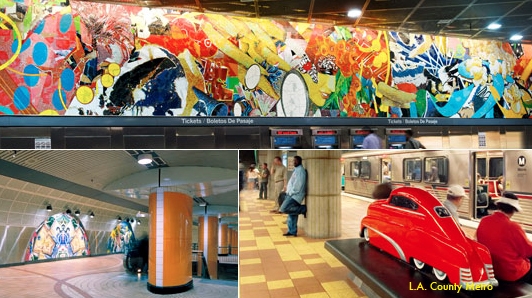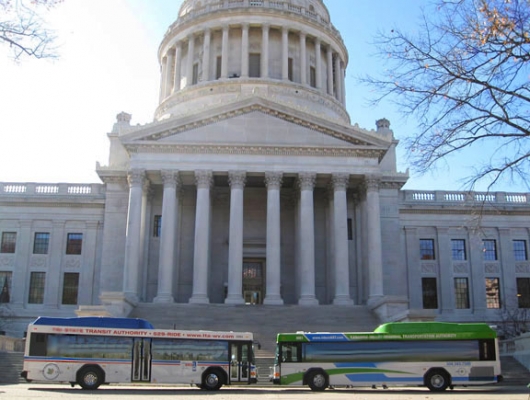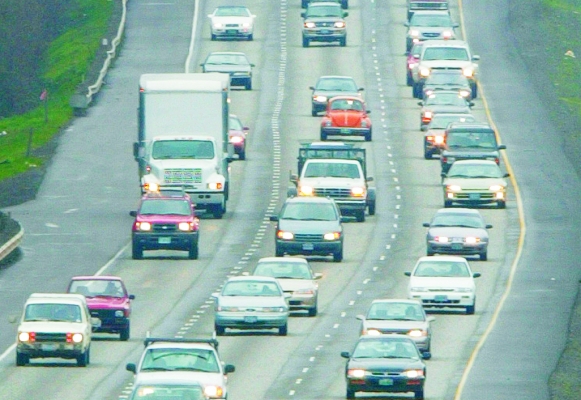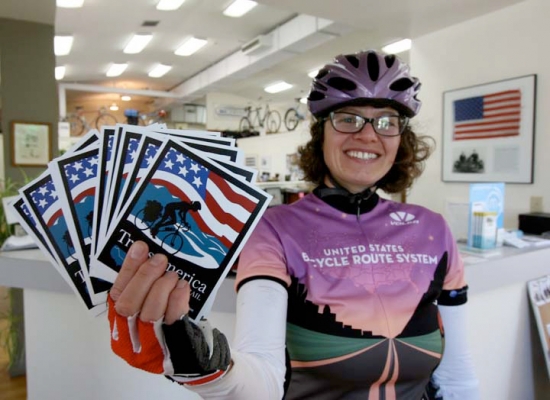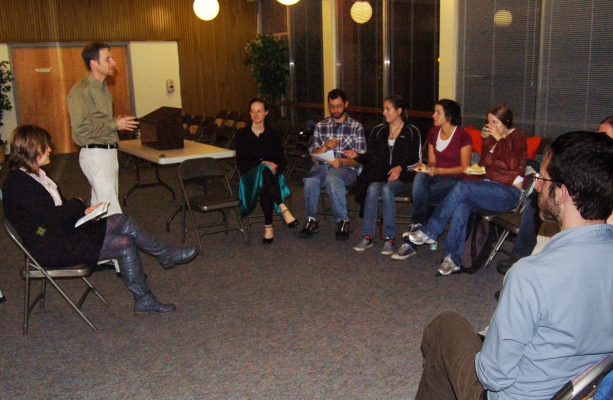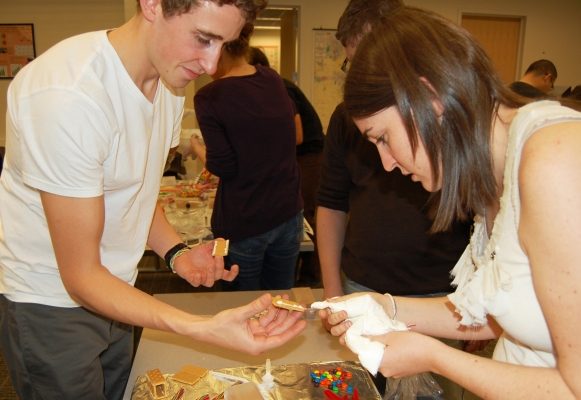Tuesday, Jan. 25 dispatch from the Transportation Research Board annual meeting:
Sometimes even stimulus needs a little stimulus. That was certainly true in Los Angeles County, faced with a backlog of transportation needs.
Doug Failing, chief planner with the Los Angeles County Metropolitan Transportation Authority, or Metro, spoke at a session at the Transportation Research Board's annual meeting titled “How the implementation of ARRA-TIGER projects was accelerated: a tale of four cities.”
The Los Angeles tale is one of good fortune and good timing. As talk of a federal stimulus package was heating up, the county passed Measure R in November 2008. The sales tax measure would commit a projected $40 billion to transportation projects over the next 30 years.
The federal stimulus project gave that effort a boost when it passed in early 2009. Metro then took a further step, Failing said: the agency would speed up 12 key mass-transit projects to be completed within 10 years instead of 30.
Transportation-system investments have gone a long way toward moving people more efficiently in an area known for its gridlock. Once the worst metro area in the country in terms of hours spent in traffic, that number has declined over the last decade, with other cities taking over...
Read moreFaculty and students from OTREC universities will be featured at more than 35 sessions at the Transportation Research Board’s annual meeting Jan. 23 to 27 in Washington D.C. The meeting offers a forum to show OTREC’s research and programs to approximately 10,000 transportation professionals representing various disciplines and countries. Download OTREC’s guide to TRB.
Among these sessions, a highlight is the presentation of work that has emerged from OTREC’s collaborations with other members of the Region X Consortium, which includes the Departments of Transportation and University Transportation Centers from Alaska, Idaho, Oregon, Washington and Montana.
OTREC is pleased to announce the posting of the 2011-2012 Request of Proposal (RFP). The total funding available under this RFP is approximately $2 million, and OTREC expects to fund as many high quality proposals as possible to support relevant work that relates to the theme, research emphasis area and supports national transportation priorities, initiatives and needs. Please note some of the changes to the 2011-2012 RFP:
- The research emphasis area for this upcoming year is data-driven decision-making such as performance measures research. This reflects the research direction locally and nationally. These priorities are not at the exclusion of other thematic research areas, but proposals submitted that directly respond to this priority area will rank higher among the diverse portfolio of proposals.
- PIs with delinquent progress or final reports and outstanding match documentation will need to submit materials by March 31, 2011 otherwise their proposals will not be considered for funding.
- A brief project description (1-2 paragraphs in length) is due February 25, 2011. This will help assist in identifying peer reviewers. The quicker topical areas can be identified, the more efficient the review process.
- Standard budget line items totaling $3700 should be included in every proposal for travel to...
Decades after the completion of most interstate freeways, many transportation authorities have turned their attention to expanding existing freeways. A new OTREC research report examines the consequences for American urban areas if all freeway expansion stopped.
Titled “No More Freeways,” the report concludes that investing in arterial streets instead of expanding freeways provides the greatest social benefit for the cost. Doing so distributes roadway capacity throughout the area instead of concentrating it on freeway corridors.
The “no-more-freeway” policy helps distribute jobs and housing throughout the urban area and makes it easier to get around, principal investigator Lei Zhang found. Zhang modeled various transportation alternatives for both a hypothetical urban area and a real-world system: Minneapolis-St. Paul.
Compared with various public, private and mixed-ownership scenarios for freeway expansion, arterial street investments perform better over the first eight years. By year 10, the model shows, public-private and public freeway investments provide a greater net social benefit, assuming a 3-percent-per-year increase in travel demand.
Factors not considered in the model, namely transit and land use, would make the “no-more-freeways” option a better choice for a longer period, Zhang...
Read moreThe University of Oregon's Sustainable Cities Initiative has hired Metro Councilor Robert Liberty as the program's executive director. Liberty will start in the newly created post Jan. 18.
Liberty currently represents 240,000 residents in northeast, southeast and southwest Portland on the regional government's council, where he has served since 2005.
The Sustainable Cities Initiative is a multi-disciplinary effort to transform higher education with community engagement, interdisciplinary collaboration and sustainability study to influence public policy. The initiative is one of three OTREC-supported initiatives for 2011. This support has helped the initiative blossom, and hiring an exectuive director is indicative of its growth and continuing success.
As executive director, Liberty will build relationships with state and federal policy makers and others to grow the program, which integrates research, education, service and public outreach around issues of sustainable city design.
"Robert's expertise is a great fit for the leadership opportunity we envisioned with the role of executive director," said professor Marc Schlossberg, co-director of the...
Read moreUse of small electric vehicles is spreading from gated communities and college campuses onto city streets and even state highways. But should these vehicles share the road with heavier, faster ones?
In many situations, concluded Oregon State University researcher Kate Hunter-Zaworski, the answer is “no.” Hunter-Zaworski examined the vehicles, called neighborhood electric vehicles or low-speed electric vehicles in this OTREC project, co-sponsored by the Oregon Department of Transportation. Oregon regulations should limit the vehicles to roads with a speed limit of 25 mph and only allow them to cross faster roads at four-ways stops or traffic lights, she found.
In her just-published report, Hunter-Zaworski also urges transportation authorities to commit to separated transportation networks for all lower-speed transportation, including neighborhood electric vehicles. Such networks can connect neighborhoods to workplaces, schools and services with little use of busy roads.
Because neighborhood electric vehicles often look more like passenger cars than golf carts, their drivers and other road users might think they’re just as safe. But governments don’t classify neighborhood electric vehicles as passenger cars, and they aren’t subject to the same safety regulations. As a result, Hunter-Zaworski stresses the need to educate users...
Read moreHeidi Beierle, a community and regional planning master’s student at the University of Oregon, shared stories Dec. 11 from her solo cross-country bicycle ride. Beierle presented “Take Me to Cooky’s: Riding Solo from Eugene to D.C.” at Eugene’s downtown Public Library.
During the summer of 2010, Beierle rode her bicycle from Eugene to the Preserving the Historic Road conference in Washington, D.C. At the conference, Beierle presented preliminary findings of her research on the connections among historic roadways, bicycle tourism and rural economic development.
Beierle rode solo approximately 3,500 miles in 80 days with all her gear in two front panniers. She delivered window decals to b usinesses along the TransAmerica Bicycle Trail and interviewed 100 people about bicycle touring and rural living. Beierle focused on adventure and the unexpected, including sleeping among sprinklers in Prineville, Ore., raptor and mosquito attack in Wisdom, Mont., quirky bike-friendliness in Guffey, Colo., and intense heat with dog attack made better by doing a tractor wheelie in western Missouri.
usinesses along the TransAmerica Bicycle Trail and interviewed 100 people about bicycle touring and rural living. Beierle focused on adventure and the unexpected, including sleeping among sprinklers in Prineville, Ore., raptor and mosquito attack in Wisdom, Mont., quirky bike-friendliness in Guffey, Colo., and intense heat with dog attack made better by doing a tractor wheelie in western Missouri.
She began her presentation with a picture of some peculiar looking cows. “I rode past...
Read moreOTREC is releasing this pre-solicitation notice to help potential Principal Investigators (PIs) and researchers plan for their proposal submittal in the upcoming year. If you have any questions, please contact Hau Hagedorn at hagedorn@pdx.edu. Some specifics relating to the next RFP include:
- PIs will have 9 weeks for developing proposals.
- PIs are to submit a brief (1-2 paragraphs) proposal description by Feb 25 to help assist in identifying peer reviewers. The quicker topical areas can be identified, the more efficient the peer review process.
- Current PIs who are interested in submitting a proposal are expected to turn in all outstanding reports and products by Mar 31. OTREC will not accept proposals from PIs with outstanding reports and/or products. That is, if a PI submits a proposal and does not turn in their deliverables by Mar 31, we will not send their proposals out for peer review.
- New for this year, PIs with projects with an end date of on or before Sep. 30, 2010 will need to submit their match documentation. OTREC staff will follow up with PIs individually.
Request for Proposal (RFP) Activity | Anticipated 2011 Dates |
Issue Notice of RFP timeline | ...
Bridging the gap between engineers and planners starts with asking the right questions, Portland State University associate professor Kelly Clifton told University of Oregon planning students. But it can’t stop there.
In Eugene Nov. 18 for the LiveMove student group’s Movers and Shakers Speaker Series, Clifton stressed the importance of student planners and engineers educating themselves in both disciplines. Doing so gives planners technical skills and engineers understanding of the broader implications of transportation systems.
Engineers are problem solvers, Clifton said. Asked to move as many vehicles as possible through an area, they’ll figure out a solution. But the question should be reframed: What’s the best way for people, not just vehicles, to get around? That includes walking, cycling and transit.
Planners don’t need to become engineers themselves, Clifton said, but they’ll get farther by understanding how engineers bring transportation planning concepts to life. “Don’t be afraid of math,” she said.
Even residents of a gingerbread candyland can't get around with holiday magic alone. After all, Santa's elves still need a reliable way to get from their cozy homes to the workshop.
Sadly, transportation planners have turned a frosty shoulder to sugar-based transit systems. Until now.
On Dec. 3, Portland State University's Students in Transportation Engineering and Planning held the first gingerbread transit station competition. Four teams of students pulled their attention away from human transit to focus on the needs of gingerbread people and misfit toys.
Dealing with building materials of unknown structural properties, students field engineered solutions. Licorice sticks stood in for steel rails, candy canes for bicycle racks. For a binding agent, students mixed cream of tartar and egg whites instead of portland cement.
The resulting transit system has already resulted in fewer traffic gum-ups and a drastic reduction in ultrafine powdered-sugar emissions. Sleigh-travel-time reliability has also improved.
Researchers are now assessing the durability of corn-syrup-reinforced composites in candy bridges, the potential for alkali-silica reaction in gingerbread pavement and the possibility that someone hungry will stumble in and eat the infrastructure.
The winning design team was Transit Wonderland, composed of Jesse Boudart, Sara Morrissey, Mark Haines and Meeyonwoo Lim.

